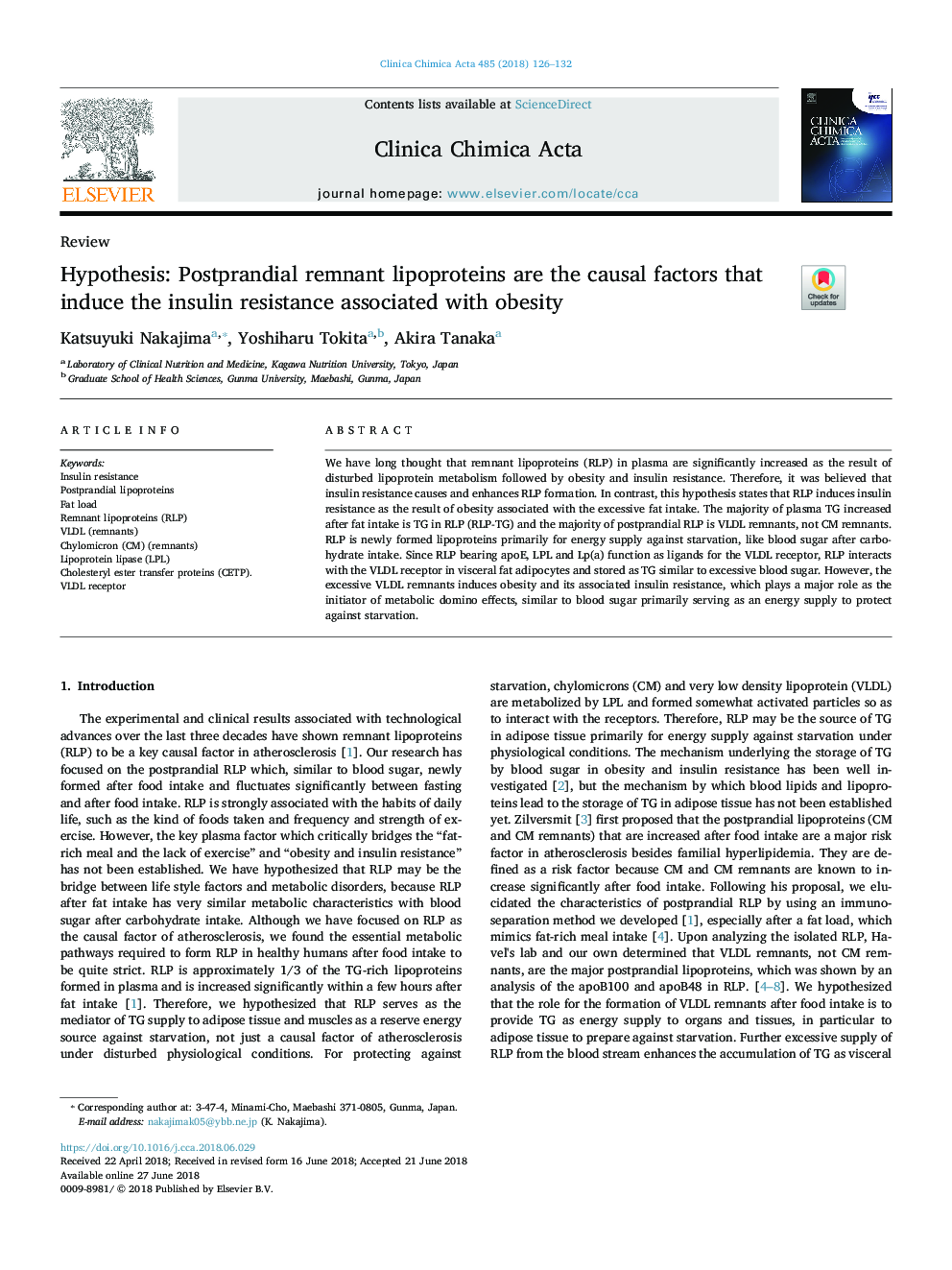| کد مقاله | کد نشریه | سال انتشار | مقاله انگلیسی | نسخه تمام متن |
|---|---|---|---|---|
| 8309382 | 1538614 | 2018 | 7 صفحه PDF | دانلود رایگان |
عنوان انگلیسی مقاله ISI
Hypothesis: Postprandial remnant lipoproteins are the causal factors that induce the insulin resistance associated with obesity
ترجمه فارسی عنوان
فرضیه: لیپوپروتئین های باقی مانده پس از فروپاشی، عوامل ایجاد کننده ی مقاومت انسولین در ارتباط با چاقی هستند
دانلود مقاله + سفارش ترجمه
دانلود مقاله ISI انگلیسی
رایگان برای ایرانیان
کلمات کلیدی
موضوعات مرتبط
علوم زیستی و بیوفناوری
بیوشیمی، ژنتیک و زیست شناسی مولکولی
زیست شیمی
چکیده انگلیسی
We have long thought that remnant lipoproteins (RLP) in plasma are significantly increased as the result of disturbed lipoprotein metabolism followed by obesity and insulin resistance. Therefore, it was believed that insulin resistance causes and enhances RLP formation. In contrast, this hypothesis states that RLP induces insulin resistance as the result of obesity associated with the excessive fat intake. The majority of plasma TG increased after fat intake is TG in RLP (RLP-TG) and the majority of postprandial RLP is VLDL remnants, not CM remnants. RLP is newly formed lipoproteins primarily for energy supply against starvation, like blood sugar after carbohydrate intake. Since RLP bearing apoE, LPL and Lp(a) function as ligands for the VLDL receptor, RLP interacts with the VLDL receptor in visceral fat adipocytes and stored as TG similar to excessive blood sugar. However, the excessive VLDL remnants induces obesity and its associated insulin resistance, which plays a major role as the initiator of metabolic domino effects, similar to blood sugar primarily serving as an energy supply to protect against starvation.
ناشر
Database: Elsevier - ScienceDirect (ساینس دایرکت)
Journal: Clinica Chimica Acta - Volume 485, October 2018, Pages 126-132
Journal: Clinica Chimica Acta - Volume 485, October 2018, Pages 126-132
نویسندگان
Katsuyuki Nakajima, Yoshiharu Tokita, Akira Tanaka,
